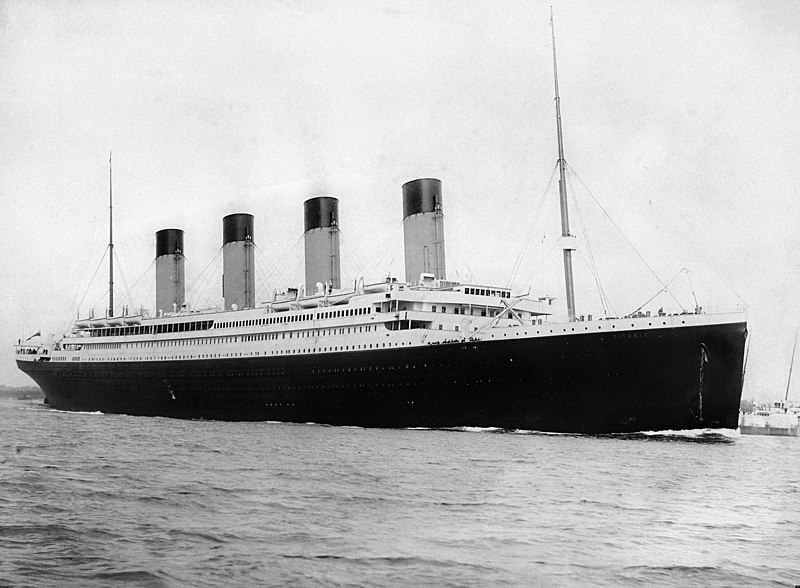
People Are Only Now Learning The Horrifying Explanation For Why The Titanic’s Wreckage Has No Remains
People Are Just Now Discovering the Chilling Reason Why There Are No Human Remains in the Titanic Wreckage
More than a century after the tragic sinking of the RMS Titanic, people continue to be haunted by the ship’s story—and perhaps even more so by what wasn't found in its final resting place. Despite the loss of over 1,500 lives in one of the deadliest maritime disasters during peacetime, not a single human body has ever been located within the ship’s massive underwater wreckage. This eerie absence has left many questioning: What happened to all the victims of the Titanic?
The Titanic sank on April 15, 1912, during its maiden voyage from Southampton, England, to New York City after it struck an iceberg in the frigid North Atlantic. Due to an inadequate number of lifeboats and a rushed evacuation process, the tragedy claimed the lives of approximately 1,500 out of the 2,224 passengers and crew onboard.
It wasn’t until September 1, 1985, more than 70 years after the disaster, that the wreck of the Titanic was finally discovered—lying some 12,500 feet (nearly 3,800 meters) below the surface of the ocean. The ship was found to have broken apart before it sank, with its bow relatively intact and its stern more severely damaged. The surrounding area spanned a debris field roughly 5 by 3 miles wide, filled with fragments of the ship, furnishings, luggage, dinnerware, and other remnants of a bygone era.
But notably missing were human remains.
Although a few scattered personal items, such as shoes and boots—often found in pairs, eerily arranged on the seafloor—were discovered, no bones, bodies, or clear human remnants were ever recovered from the wreck site. So what exactly happened to the over 1,500 people who perished?
According to oceanographers and deep-sea researchers, there’s a scientific explanation that’s just as unsettling as it is fascinating. The wreck lies in a part of the Atlantic Ocean where extreme pressure, near-freezing temperatures, and unique chemical conditions prevail. These conditions make it inhospitable for human remains to survive long-term.
Robert Ballard, the famed explorer who led the team that first located the Titanic wreck, explained that the water at those depths is undersaturated in calcium carbonate, a critical component of bones. In such an environment, once soft tissue is consumed by marine organisms like deep-sea scavengers and bacteria, the bones themselves begin to dissolve—essentially vanishing into the surrounding water. Ballard noted, “The water in the deep sea is under-saturated in calcium carbonate… so once the critters eat their flesh and expose the bones, the bones dissolve.”
He contrasted this with the Black Sea, where human remains may be better preserved because its oxygen-depleted waters lack the marine life necessary to consume soft tissues—resulting in “perfectly mummified fossils.”
The idea that the victims of the Titanic were not recovered, not even in skeletal form, has unsettled many. Reddit users have expressed shock and discomfort upon learning this, with comments like “That is horrifying,” “This is so eerie to think about…,” and “Whoa, nightmarish.” Yet some found solace in the natural process, saying the victims were “given back to nature in the only way Mother Nature knows how.”
Since the discovery of the wreck, countless items have been carefully retrieved for study and exhibition. Museums around the world now display Titanic artifacts, from dinner plates to suitcases, providing tangible connections to those who were lost.
However, efforts to raise the Titanic itself have never succeeded—and likely never will. Over the years, the wreck has significantly deteriorated. Iron-eating bacteria and unintentional collisions from research submersibles have caused considerable structural damage. In 2006, experts estimated that the ship's remaining framework might collapse entirely within 50 years, leaving only piles of rust and interior objects behind.
The allure of the Titanic remains powerful, and expeditions to the site continue—though not without risk. In 2023, a tourist dive to visit the iconic wreck ended in tragedy when the Titan submersible, operated by OceanGate Expeditions, imploded during its descent, killing all five people on board, including CEO Stockton Rush.
Today, the Titanic lies silent and solemn on the ocean floor. While its human passengers are no longer physically present, their stories—and the mystery of their final moments—continue to captivate and move us, more than a century after that fateful night.
News in the same category


Japanese “Baba Vanga” Meme Resurfaces After July 2025 Tsunami Triggers Alerts

Why you should always put a coin in the freezer before you leave home

Heroic Teen Malaya Grace, 17, Dies After Saving Siblings from Drowning in Texas Floods

Why You Should Never Ever K--ill A House Centipede If You Find One Inside Of Your Home

‘Granny Pods’ Let Aging Parents Stay Close by in Your Backyard

Airport baggage handler issues warning to anyone who ties a ribbon on their suitcase

What Does it Symbolize When a Person Who Passed Away Shows up in Your Dream?

Optical illusion reveals whether you’re an introvert or extrovert

Trapped in Silence: Boy Awakens After 12-Year Coma With Terrifying Secret
Imagine suddenly being trapped inside your own body—fully conscious, aware of your surroundings, but completely unable to move, speak, or communicate in any way. For Martin Pistorius, this unimaginable scenario was reality for more than a decade. His st

Urgent warning issued to all iPhone users following release of iOS 18.6

Experts Warn of Imminent 'Cosmic Hell' That Could Wipe Out Mankind, Exact Time Revealed
Though the ending is billions of years away, the emerging evidence is shifting scientific consensus on cosmic fate. Understanding dark energy—the force shaping expansion—is one of the greatest unsolved mysteries in physics.

Ancient tablet has been completely translated and has some terrifying predictions for humanity

Astronaut Waves And Turns His Camera To Disprove The Flat Earth Theory For Good

Your iPhone’s Volume Buttons Are Loaded with Hidden Features

Astronaut shares the profound ‘big lie’ he realized after seeing the Earth from space

Some people are only now realizing what the “WC” sign stands for on washrooms

NASA responds after scientist warned 'hostile alien threat' could attack Earth in just months

TerrIfying Study Links Everyday Household Chemical to Over 350,000 De@ths Worldwide
Experts urge immediate global action after new data uncovers staggering cardiovascular risks tied to everyday plastic-softening chemical.

How Often Should Men Ej@culate Each Month? Sh0cking Harvard Study Reveals a Powerful Link to Pr0state Health
It’s not often that something enjoyable turns out to be good for your health - but in this case, it just might be.
News Post

We weren’t the only humans just the last ones left to tell the tale

Japanese “Baba Vanga” Meme Resurfaces After July 2025 Tsunami Triggers Alerts

Top Signs of Iron Deficiency and How To Increase Iron Levels In Your Blood

Doctors Suspected Baby Had Mouth Tumor—The Shocking Truth Left Them Speechless

Why Some People Never Break A Bone—3 Wild Theories Explained

JAW DROPPING SIMULATION SHOWS WHAT HAPPENS TO YOUR BODY WHILE FASTING FOR 36 HOURS TO ACHIEVE 'FULL RESET'

Why you should always put a coin in the freezer before you leave home

6 Health Benefits of Sleeping In a Cold Room and How to Make it Cooler- And Why You May Not Want to Use a Fan

Dentists Explain What Those Black Triangles Are Between Your Teeth

Heroic Teen Malaya Grace, 17, Dies After Saving Siblings from Drowning in Texas Floods

Silent Walking’ Is The Latest Trend Gen Z Are Obsessed With

Why You Should Never Ever K--ill A House Centipede If You Find One Inside Of Your Home

‘Granny Pods’ Let Aging Parents Stay Close by in Your Backyard

Airport baggage handler issues warning to anyone who ties a ribbon on their suitcase

This optical illusion may help identify autistic traits in seconds

Man Folded In Half Stands Straight After 28 Years

What Does it Symbolize When a Person Who Passed Away Shows up in Your Dream?

Mary Ann Bevan: The Tragic Story of the ‘World’s Ugliest Woman’

Pressure Points in Your Feet: Use This Foot Massage Chart for Pain Relief
